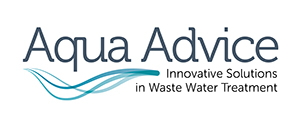The effluent treatment system: different types and what they do

An effluent treatment system can come in any shape or size but what are the differences? Let’s take a look…
Why is an effluent treatment system needed?
As we have discussed previously, all businesses are required by law to dispose of their effluent wastewaters in a safe and responsible way.
This disposal requires consent to discharge: from water companies in terms of sewage waste, whilst consent to discharge waste into land, rivers and sea is governed by the Environment Agency in England, Natural Resources Wales or SEPA, Scotland.
Discharge consent sets limits on the level of toxic materials in wastewater, including metals, suspended solids, pH, chemical oxygen demand, ammonia and sulphates.
Failure to meet discharge consent limits can lead to fines and other punitive consequences, not to mention the negative impact on the environment.
It is vital, therefore, that your business has an effective effluent treatment system in place.
Why isn’t there one type of effluent treatment system that fits all?
In the same way that there are many different industries, there are many different types of effluent wastewater produced by these industries.
Depending on the nature of the industry and the processes and products involved, industrial effluent can vary in terms of:
- Physical characteristics, such as temperature, solids, odour, and colour.
- Chemical composition and pH rating
- The presence of biological materials
These parameters will determine the type of effluent treatment system required to ensure that the wastewater discharged into the environment is as clean and safe as possible.
Whilst a “turnkey” solution may do the trick, it might be that a bespoke effluent treatment system must be designed and installed.
Types of effluent treatment systems available
Depending on the nature of the effluent requiring treatment, there are four different levels of system:
Preliminary level
Systems of this kind use physical processes to remove solid waste from the effluent. This can include:
Settlement: a physical-chemical treatment system using chemicals to help settle out some of the particles in the effluent.
Filtration: effluent treatment systems that separate solids from liquids using either physical or mechanical methods
Dewatering: physical treatment systems using belt filter presses, centrifuges and chamber filter presses to separate sludge into a liquid and a solid part.
Flow equalization: not a treatment system per se, flow equalization is the process of controlling hydraulic velocity, or flow rate, through a wastewater treatment system, which forces solids and organic material out of the treatment process.
Clarification: removing suspended solids through gravity settling, providing a clarified liquid effluent.
Screening: a mechanical-physical process that removes sedimentable organic substances from the effluent using screens made of parallel bars, rods, wires or wire mesh.
Primary level
Primary level effluent treatment systems involve the physical processes listed above, with the addition of chemical processes to improve the quality of the wastewater. These processes can include:
Dosing: the liquid and solid components of the effluent are dosed with chemicals to ensure they are free of contaminants before they are reintroduced into the water system. There are different types of chemicals and systems used depending on what needs to be changed or controlled, such as pH control, nutrient feed requirements, and odour control.
Coagulation: chemical coagulants are used to gather fine waste particles to form larger particles which are heavier and so easier to settle and separate from water.
pH control: neutralizing pH levels by adding HCI or sodium carbonate, typically to a range between 6 and 9.
Chemical precipitation: removing toxic metals from effluent using chemicals such as hydroxide, carbonate and sulphide.
Chemical oxidation and reduction: pollutants are treated with an oxidising agent which convert them into harmless chemicals.
Dissolved air flotation: dissolved air is used to float suspended solids from water. Typically used when the suspended solids have a lower density than water.
Secondary level
Secondary level effluent treatment systems use biological and chemical processes to remove biodegradable organic materials and suspended matter.
The chemical processes are similar to those used in the primary level.
The biological processes are divided into two categories:
Aerobic: oxygen is used to break down organic matter and remove other pollutants like nitrogen and phosphorus.
Anaerobic: wastewater or material is broken down by micro-organisms without the aid of dissolved oxygen. Instead, anaerobic bacteria uses oxygen that is found in the oxides that are introduced into the system or they can obtain it from organic material within the wastewater.
Tertiary level
This level uses processes from the previous levels to remove both suspended and dissolved pollutants.
It by using a combination of physical, chemical and biological processes together that most effluent treatment systems effectively remove hazardous pollutants from wastewater, allowing it to be safely discharged into sewers, waterways and the sea.
What is the best effluent treatment system for my business?
As we have discovered, the right effluent treatment system will depend on the characteristics of the effluent produced by your business and the different physical, chemical and biological processes required to treat it into order for you to meet your discharge consent limits.
Treatment experts like Aqua Advice can carry out laboratory trials on your wastewater to establish its physical, chemical and biological characteristics and thus identify the right processes to treat it.
They can also carry out a full audit of your existing treatment systems to identify areas of improvement or if a new treatment system is needed all together.
Make sure you have the right effluent treatment system for your business, contact Aqua Advice today.
